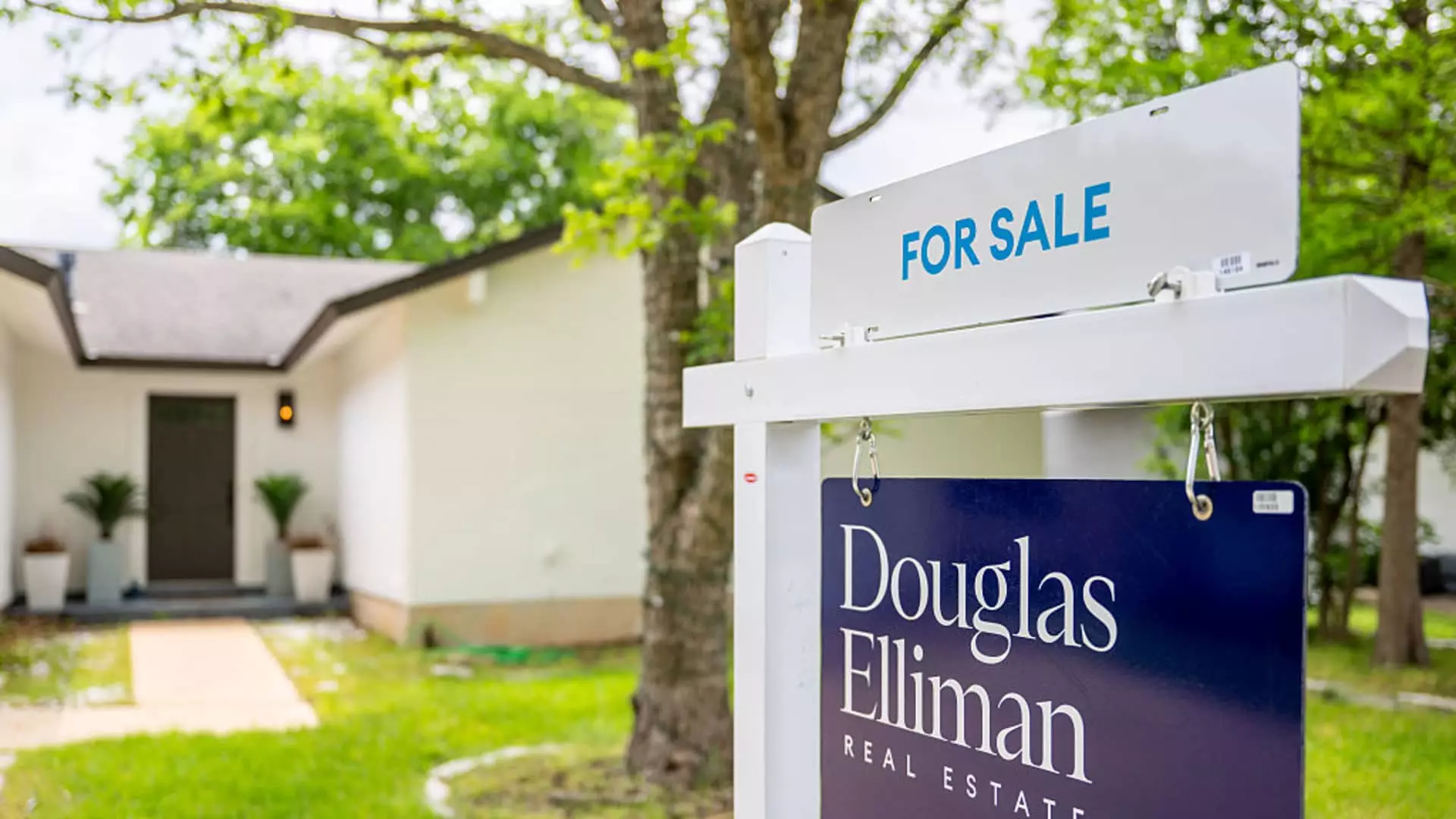The American housing market finds itself in a precarious position as the specter of high mortgage rates looms large. Recent data from the National Association of Realtors indicates that sales of previously owned homes saw a modest increase of just 0.8% in May—an unexpected uptick that belied analysts’ predictions of a 1% decline. However, this seemingly positive news does little to disguise the fact that overall sales are still down compared to last year, with a 0.7% drop in year-over-year figures. This duality paints a troubling picture: a market that appears stable on the surface but is struggling to gain real traction.
We must question whether this slight increase in sales is a genuine cause for optimism or merely a blip on the radar. As high mortgage rates continue their stranglehold on potential buyers, many are left wondering whether they can, or even want to, enter the market. If the economy is indeed stable, why is buyer sentiment low? These questions become increasingly vital as we sift through the numbers and strive to understand the real dynamics at play.
Regional Disparities Point to a Deeper Divide
Digging deeper into the regional breakdown highlights a troubling narrative of disparity in the housing market. The Northeast saw a healthy increase in sales by 4.2%, while the West suffered a significant fall of 5.4%. The Western region, notorious for its exorbitant prices, is facing pronounced challenges, suggesting that luxury doesn’t always equate to liquidity. While the East and Midwest display modest growth, the West’s stark declines serve as a warning: there is a dangerous divide forming in the housing landscape, exacerbated by economic inequalities.
It’s almost as if the American dream of homeownership is being reserved for those in specific regions, echoing broader socioeconomic divides. The ramifications of these disparities may well extend beyond real estate, impacting community structures and local economies. We cannot simply dismiss these changes as a standard fluctuation in sales; they hint at a more profound crisis in wealth distribution.
Supply vs. Demand: An Uneasy Tension
One key factor contributing to the current market landscape is the increasing inventory of homes for sale. The National Association of Realtors reported a staggering 20% increase in available units compared to last year, resulting in a supply chain that stands at a 4.6-month supply—a figure still on the low side historically. Yet, what does this mean in practical terms? While it appears that the surge in inventory suggests eased competition, the simultaneous rise in prices—evident from the record high median of $422,800—reveals an underlying tension: demand persists, but buyers are increasingly hesitant due to high mortgage rates.
Further complicating this picture is the observation that a significant portion of sales—28%—occurred above the listing price, up from 18% the previous month. This underscores an interesting paradox: even as fewer homes change hands overall, the pressure on prices remains steadfast. It’s as though we are navigating a market that is both flooded with options yet straining under the weight of persistent demand. It poses a fundamental question: are we truly in a buyer’s market, or are we only being led to believe that?
The Tale of Investors and the All-Cash Trend
In a further twist, the proportion of all-cash transactions rose to 27%, suggesting that a wealthy segment of the population is effectively sidelining traditional buyers. This trend of investor-driven sales points to the burgeoning reality of homeownership becoming an elitist sector—a privilege primarily accessible to those with cash reserves. As homes become increasingly unaffordable for average families, it raises alarms about the sustainability of such a market.
Moreover, the market’s increasing reliance on cash offers reflects both a troubling trend of financial elitism and a potential misalignment with the average American’s homebuying capabilities. With first-time buyers making up only 30% of transactions compared to 31% last year, it feels as if the aspiration to own a home is slipping away from the younger, upcoming generations. Instead of investing in the American dream, they may find themselves renting indefinitely—a notion that should be deeply concerning for anyone focused on long-term economic stability.
In the end, the current housing market epitomizes the complex interplay of economic factors driving both opportunity and exclusion. As we move further into 2023, one can only wonder if this market dynamic will find a more equitable balance, or if it will continue to tilt toward a privileged few. The stakes couldn’t be higher.

